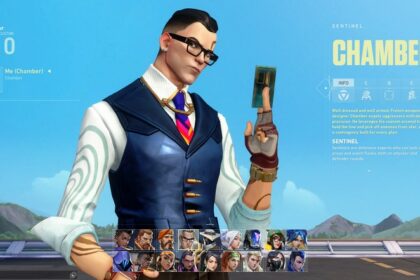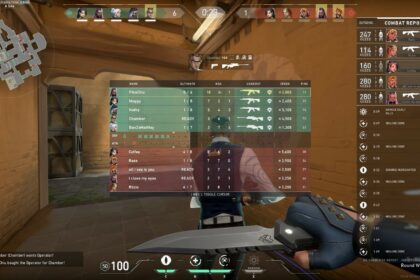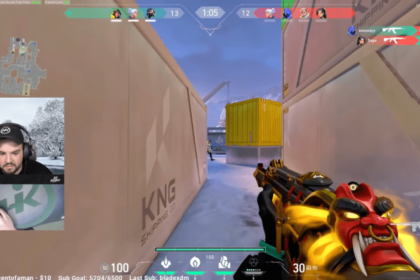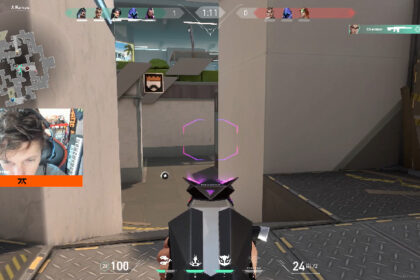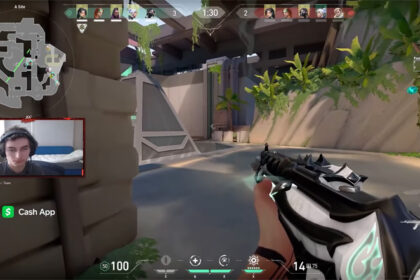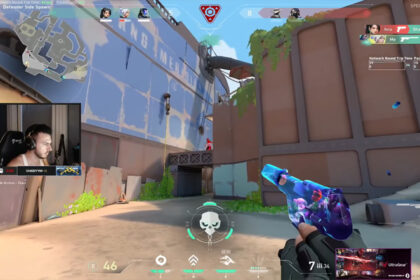Valorant has a lot of callouts and terminologies exclusive to the game.
Some of them even originated from other competitive shooters, such as catwalk, AWP, or ult.
These callouts aren’t that common to most Valorant players, especially those who haven’t played other games.
This guide will focus more on the most common Valorant terminologies instead.
Ace
An ace is called when a single player elimates everyone on the opposing team. If a Sage resurrects, you must get all six eliminations to get the ace.
Team Ace
Team ace happens when each of your teammates gets a single elimination for a round. It also works when someone gets resurrected by Sage, and one of your teammates gets two eliminations.
ACS
ACS stands for Average Combat Score and is your contribution to the match in terms of damage and non-damaging assists. ACS determines your place on the leaderboard and determines the amount of RR (Rank Rating) you gain or lose in a match.
ADS
Aim down sights or using right-click on your weapon to use the sights.
Anchor
A player who chooses to hold down a spot. Anchor callouts are common on the defending side when players commit to defending one site.
AWP or OP
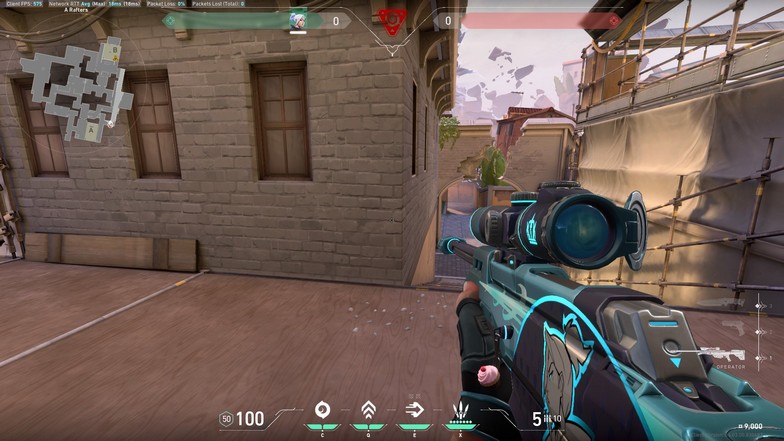
Another name for the Operator sniper. Players that played Counter-Strike never let this terminology get old. It has been used for decades, since Counter-Strike has been the most relevant competitive FPS game in history.
Baiting
Baiting is where you use a teammate to check if there will be enemies in a specific area. After your teammate gets the information, you can proceed to pre-firing the enemies. It can be treated as “trading” as well.
There are other examples of baiting where you have a teammate holding the same position you are holding, and the enemies will never check the corner again if your teammate dies. So instead of trading, you still hold the angle until you can eliminate everyone.
Bunnyhop
Bunnyhop is when you gain momentum first by running with the knife (since you move faster). You can perfect your jumps perfectly to maintain that speed while jumping.
It is faster because you gain more speed when the ground is uneven (lower or elevated).
Players use this tactic because it is fast, and you can time your walk (Shift) mid-air, so you make no noise when you land at the end.
Camp
Holding any weird angle like a rat to either gain information about rotations through footsteps or catch everyone off guard if they do not clear corners.
Cooldown or CD
The ability is not yet available or is on cooldown.
Crossfire or Cross
Holding down an area of the map with a teammate but taking two separate positions that are completely opposite to each other.
This essentially creates two targets for the unwary enemy to aim at. Players usually ask, ‘cross with me,’ and it doesns’t mean you go with the player and cross an area.
It means to hold opposite positions on one angle or choke point.
Default
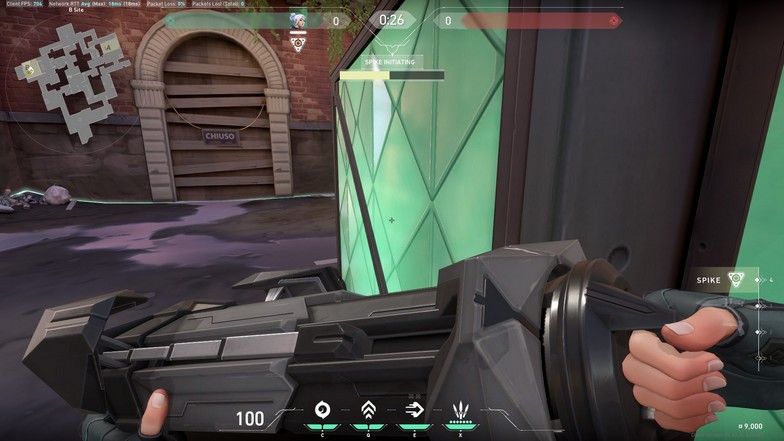
Default is an area on the map where enemies usually hold, but there is no defining feature on that area. If you hear “plant on default” or “enemy is on default” on Bind, you can assume default is on the area where you usually plant the spike in A Site from A Mid.
Dink
Dinked means a headshot, but the enemy is still alive. Players call ‘dink’ to let teammates know that an enemy is low.
Double Peek
The act of going around corners doubled up with a teammate at the same time. One teammate could wide-peek while the other provides suppressing fire. Helps with a coordinated flush of a crowded area.
You usually pair these double peeks with a blind. The player without the blind does the wide-peek since the player blinding will take a moment to get his or her weapon ready.
Drop
When a teammate needs a weapon and is low on credits, they ask you to drop them one. It can also mean the area where attackers push on A Site Fracture.
Eco round
One of the most important in-game commands which let your team know that you will not use all your credits on weapons but rather save them for future rounds. Full eco means that you are purely using a classic because you will not be able to afford a full buy next round if you don’t.
Entry
Telling your team to enter a site, especially for the leading player like a Jett or Reyna. Entry just signifies a team to execute a specific site.
Exit Frag
Getting eliminations by picking off attackers leaving the bomb site before the explosion. Usually when you are the last defender left, and you have no hope of defusing the bomb, you wait for attackers to run away and try to pick them off for better weapons or hurt their economy.
Fake
This is a defensive move where you start defusing the bomb but stop after a couple of seconds. The opponent thinks you are busy defusing, and the enemy reveals their position. There are a lot of mind games involved.
The defuser is always at a disadvantage, but it also depends on how the enemy plays it. You might have heard phrases like “pros don’t fake” or “fake don’t pros” because the enemies do not try to peek and reveal their position.
Players usually fake defuse if they have no clue about the location of the last enemy. Making any kind of noise after doing a fake defuse is completely pointless because the enemy will know you are not defusing.
Flank
A callout to say someone is coming from behind or another angle. This strategy is to squeeze out the enemies into one specific area of the map.
Flash
When someone calls for a flash, they will want to enter with a supported flash from a teammate. Agents with flashes take a while before they can pull up their weapons after using an ability.
This is why they use it to support other agents instead.
Flick
Quick crosshair movement to shoot from one place to another. The crosshair movement is so fast, you can’t see the crosshair/shot land on the enemy.
Force Buy
Spending all your credits even if you do not have enough credits to buy full shields and your preferred rifle (Vandal or Phantom).
Half-buy
Half-buys are usually called when your team is on a losing streak (you gain more credits per round) and your team does not have enough money to buy rifles with full shields and abilities.
Hovering around 3,000 credits can still give you a Spectre with a half shield, and you can retain enough credits for a full buy next round because of the losing streak bonus credits.
IGL
IGL refers to an in-game leader. When a player assumes or is given the role of strategist for a round or a game, he becomes the IGL.
Jiggle Peek
Repeated quick peaks around a corner to help you get information about the opponent’s positions. You can also use this tactic to bait the Operator shot so that the Operator loses the angle. Jump peek is also a better way of getting information because enemies aim at head-level.
However, you will not have the option to peek at the enemy with a weapon while doing this.
Lineups
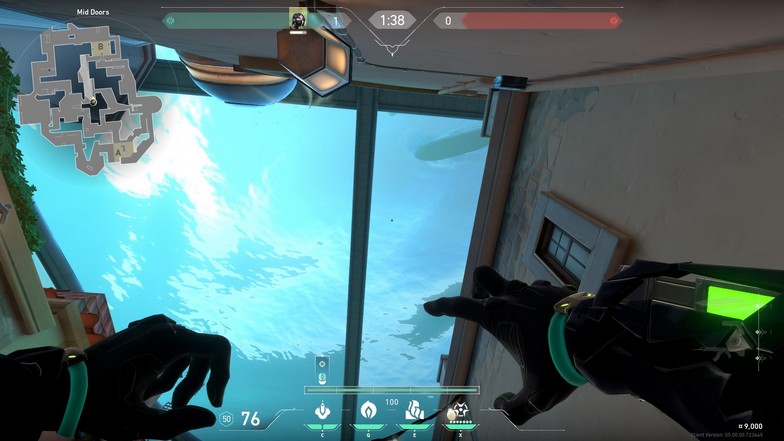
Lineups means that a player can use an ability to hit a specific area from far away. Lineups are extremely popular for agents like Brimstone, Sova, Viper, and even Killjoy.
For example, a Brimstone playing post-plant can hit a perfect molly from A Lobby to A Site in Ascent.
Lurker
A player who chooses to head out on their own in the map and tries to pick off enemies that are rushing noisily. This is a good tactic with agents like Jett and Phoenix, who can circle behind enemy lines and launch attacks.
LOS
Line of sight (in plain view).
Mid
‘Mid’ is the area of the map that forms crossroads between the two bomb sites, or simply the ‘middle’.
NT
NT is short for ‘nice try’. It means your teammates think you gave it a valiant effort despite being unsuccessful.
One-Tap
One-tap is when you eliminate an enemy in just one bullet. A Vandal, for example, can one-tap an enemy with full shields at any range if it’s a headshot.
One-Way
One-way means that there is a ‘smoke’ covering a path but only one team can see through the angle.
For example, you one-way smoked B Site in Split. As a defender, you can see the player’s legs from B Site to B Garage, while the same player cannot see anything on the same angle.
This happens because the B Site near default is slightly elevated. The same goes for A Site in Bind.
Play for Picks
Playing for picks is an in-game callout to spread out and take space. You’ll try to duel enemies 1v1 to try and get an advantage.
Play for Time
This is a defensive command. If you’ve managed to plant the spike and the other team is playing retake, your job is not to win fight, but to delay the enemy as much as possible.
Your team throws all the utility skills they have to delay the retake. Throwing utilities at the same time isn’t ideal, but with perfect play, you can win the round without fighting a single agent.
Pre-fire
Pre-firing is when you shoot before an enemy comes around a corner because you’re suspecting they might peek or because you can hear them coming.
Post-plant
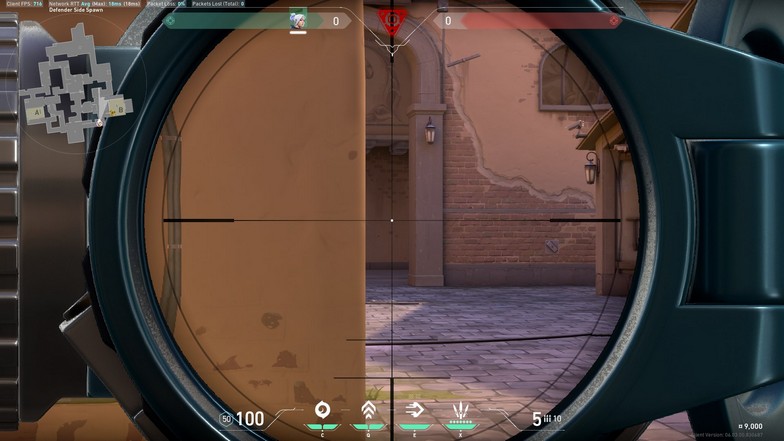
Post-plant literally means ‘the time after planting the spike.’ Attackers can say, ‘play for post-plant,’ which means don’t get too aggressive and play defending the spike.
Defenders can use the same ‘play for post-plant,’ which means the same as ‘play for retake.’
Retake
Take back control of a section of the map your team held but lost to the opponent. Retake is usually called when the enemies used too many utilities to take a site.
The defenders will back away and play for a ‘retake’ instead with their saved up abilities.
RR
RR, or Rank Rating, is a visual way to track your progress as you move between ranks.
Safe Plant
Planting the spike behind some cover where teammates can also cover you.
Stick
A teammate usually calls stick when he wants you to keep defusing while he covers your back or that enemy will not reach the bomb in time.
Rotate
Rotate is a command that suggests changing the plan and going to the other bomb site. Your team will usually backtrack and move to a different location on the map, such as going from the A site to B instead.
Smurf
A smurf is an experienced player using a different account to pretend to be a newbie and proceeds to torment players.
Spike
The spike is the bomb that attackers plant or defenders defuse.
Stack
Stack means that you are putting more players on the site. If you are completely sure the enemies are going to a particular site, you can “stack” the A Site with three or more defending players.
Sometimes it is a good strategy when you know the enemies are afraid of pushing powerful sentinels on defense, such as Killjoy and Cypher.
Subroza
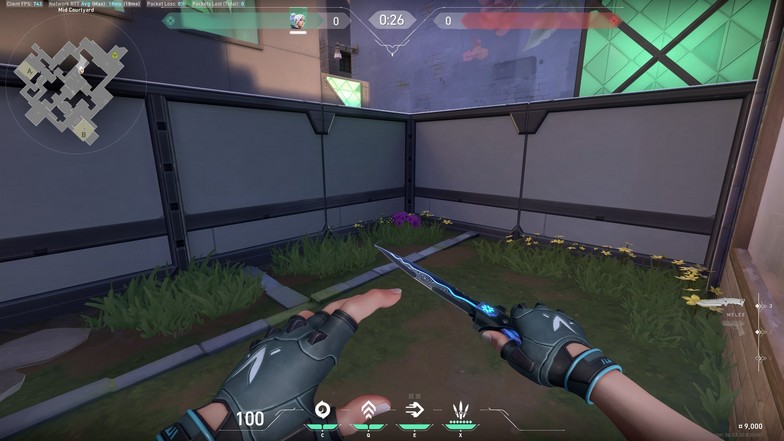
The little cubby on Mid Top in Ascent. Subroza originated from streamer and ex-professional player, Subroza.
Thrifty
Eliminating all your opponents with a cheap loadout or half-buys as a team.
Trade
A life for a life. When a teammate is killed, make sure the responsible opponent is neutralized. This is known as trading and ensures there are no landslide rounds.
Ult
Refers to the Ultimate ability of each agent in the game.
Wall bang
Valorant has several walls which show black scorch marks when shot at. These walls can be used to hit enemies on the other side.
Whiffing
When you or your team miss easy kills, it is called whiffing.

